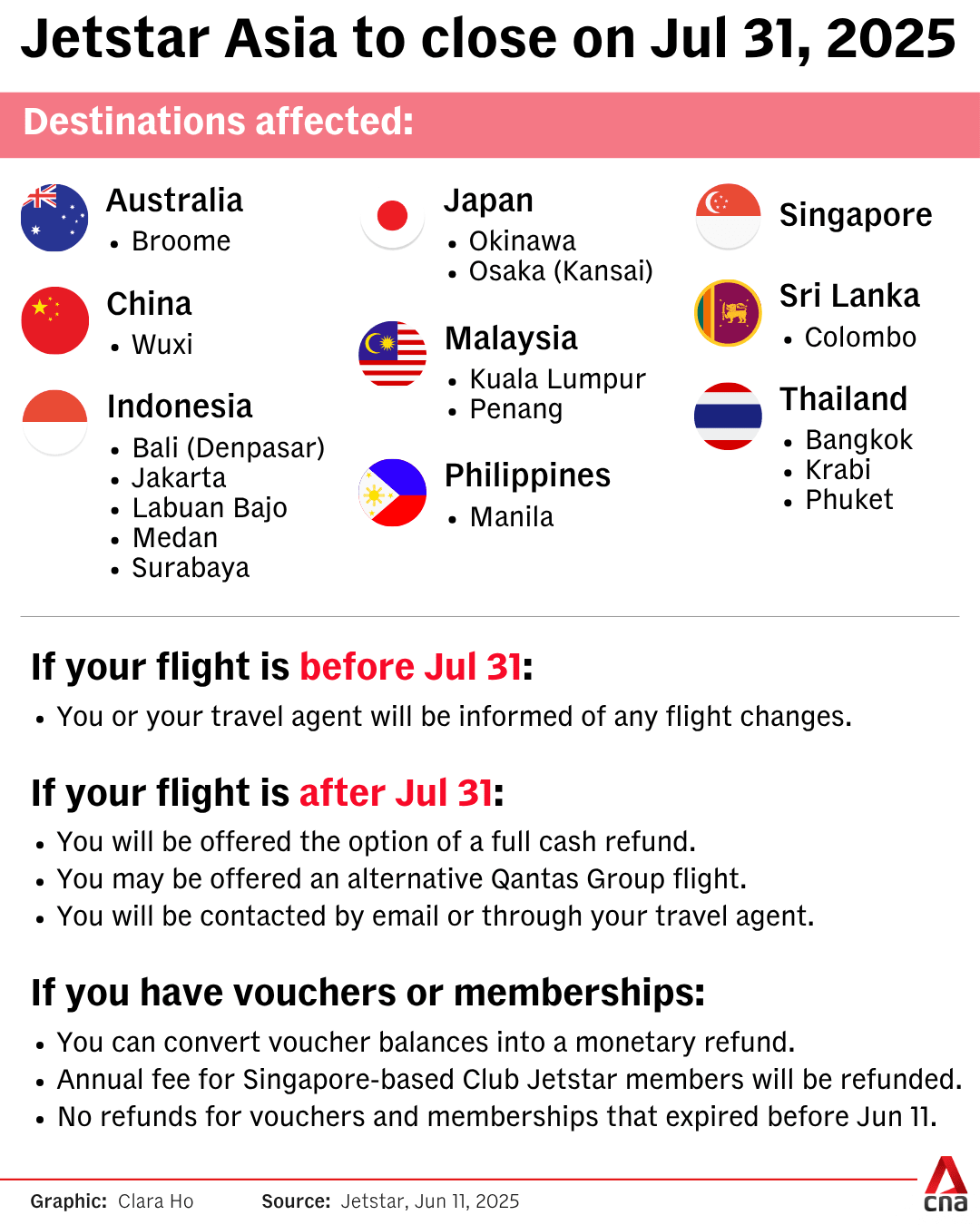In a significant development within the aviation industry, Jetstar Asia, the Singapore-based low-cost carrier, has announced that it will cease all operations by July 31, 2025. This decision marks the end of a two-decade-long journey for the airline, which has been a prominent player in the Southeast Asian aviation market.
Strategic Restructure by Qantas Group
The closure is part of a strategic restructure by the Qantas Group, Jetstar Asia’s parent company. According to a statement released by Qantas, the decision to shut down Jetstar Asia was driven by mounting operational costs, including increases in fuel, airport, and security fees, coupled with intense competition from regional low-cost carriers. Despite efforts to offset these rising costs, they have placed unsustainable pressure on the airline’s ability to offer the low fares fundamental to its business model.
Operational Impact and Customer Advisory
Jetstar Asia will continue to operate flights until July 31, 2025, with a progressively reduced schedule. The airline has assured customers that flights remain on sale for travel up to the closure date. For those with bookings after July 31, Jetstar Asia is offering full refunds or alternative travel arrangements through other Qantas Group carriers .
Employee Impact and Support
The closure will affect over 500 employees in Singapore. Qantas has committed to providing redundancy packages and support for new employment opportunities to those impacted. Additionally, the airline’s fleet of 13 Airbus A320s will be redistributed within Qantas’ operations in Australia and New Zealand, replacing leased and aging aircraft, and enabling the launch of new routes, creating over 100 new jobs.
Financial Implications
The decision to shut down Jetstar Asia entails a one-off financial hit of approximately A$175 million due to redundancy and restructuring costs. However, Qantas emphasized that this move will release up to A$500 million in capital, which will be reinvested to support the airline’s fleet renewal initiatives and strengthen its core operations in the Australasia region.
Future of Regional Aviation
The closure of Jetstar Asia highlights the challenges faced by low-cost carriers in the region, including rising operational costs and increased competition. While the airline’s exit may create opportunities for other carriers to expand their market share, it also underscores the need for airlines to adapt to the evolving dynamics of the aviation industry.


Financial Performance
Historical Losses: In the fiscal year ending June 30, 2021, Jetstar Asia reported a loss of A$165.4 million, followed by a A$37.2 million loss in the subsequent year during the COVID-19 pandemic.
Recent Losses: The airline managed a A$12.5 million profit in 2023 but returned to a A$7.1 million loss in the 12 months ending June 2024.
Projected Losses: For the current fiscal year, Jetstar Asia is expected to report an underlying loss of A$35 million before interest and taxes.
Closure Costs: The closure entails a one-off financial hit of approximately A$175 million, with the financial impact spread over 2025 and 2026.

Operational Scale
Fleet Size: Jetstar Asia currently operates a fleet of 13 Airbus A320 aircraft, down from 18 before the pandemic.
Destinations Served: The airline serves 16 intra-Asia routes from Singapore Changi Airport.
Passenger Traffic: In 2024, Jetstar Asia carried approximately 2.3 million passengers through Changi Airport, representing around 3% of the airport’s total passenger traffic.
Employment Impact
Job Losses: The closure will result in approximately 500 job losses at the Singapore-based airline.
Employee Support: Affected employees will receive redundancy packages and support for new employment opportunities across the Qantas Group and with other airlines in the region.
Route and Connectivity Implications
Exclusive Routes: The closure will lead to the termination of exclusive services on four routes: Broome (Australia), Labuan Bajo (Indonesia), Okinawa (Japan), and Wuxi (China).
Capacity Gap: Jetstar Asia operates about 180 weekly services at Changi Airport.
Passenger Traffic: The airline carried approximately 2.3 million passengers at Changi Airport in 2024, accounting for around 3% of the airport’s total passenger traffic.
Route Replacement: Singapore Airlines’ budget arm, Scoot, plans to launch new flights to Okinawa and Labuan Bajo to fill the gap left by Jetstar Asia’s exit.
Strategic Restructuring
Capital Reallocation: The closure will free up to A$500 million in capital for Qantas to invest in its fleet renewal plans.
Financial Impact: The decision to shut down Jetstar Asia entails a one-off financial hit of approximately A$175 million due to redundancy and restructuring costs.






